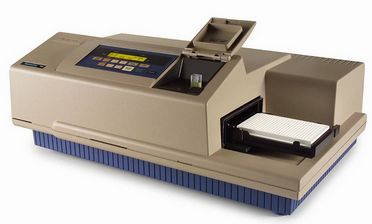Gao lab:Research: Difference between revisions
Weiping Gao (talk | contribs) |
Weiping Gao (talk | contribs) No edit summary |
||
| Line 3: | Line 3: | ||
==Research Areas== | ==Research Areas== | ||
[[Image: | [[Image:Img2.jpg]] | ||
Revision as of 20:09, 14 October 2012
Research Areas
Protein and peptide drugs, due to their high specificity, high activity, and rapid tissue penetration, are attracting more and more interests as therapeutics for the treatment of various diseases including cancer, cardiovascular diseases, diabetes, infectious diseases, and so on. Despite these advantages, a major limitation of protein drugs in clinical use is their short plasma half-life. Many proteins, with the notable exception of antibodies, are rapidly cleared from circulation because of their low molecular weight (MW) and are also prone to enzymatic degradation by proteases in the blood, liver and kidney. In an attempt to solve these problems, specialized drug delivery systems such as biodegradable polymers, liposomes, micelles and solid lipid nanoparticles have been explored, but each of them has obvious disadvantages.
Conjugating protein and peptide drugs with protein-resistant (“stealth”) polymers is a useful strategy to improve the pharmacokinetic profiles and in vivo efficacy of biopharmaceuticals. Modification of lysine or cysteine residues of proteins and peptides with poly(ethylene glycol) (PEG), generally known as PEGylation, is the most widely used polymer conjugation approach to improve the pharmacological profiles of proteins and peptides, and several PEGylated proteins and peptides have already been used clinically as therapeutics. PEGylation, however, has many disadvantages: (1) because attachment of PEG to a protein involves the reaction between two large macromolecules, the steric hindrance associated with the coupling commonly lead to low yields, typically in the 1-10% range; (2) PEGylation requires a site on the protein surface for attachment, and these sites are typically the reactive side-chains of Lys and Cys residues. Proteins, however, have numerous Lys and Cys residues on their surface, which makes it difficult to control the site and the stoichiometry of the conjugation, and often results in a heterogeneous product of positional isomers with decreased biological activity.
Therefore, it is highly desirable to develop general methods to synthesize conjugates with high yield (~50%), in which the site of conjugation, the length of the attached polymer, and the stoichiometry of the conjugation (1:1) can be precisely controlled and the conjugate should exhibit significantly improved pharmacokinetics and bioavailability compared to the unmodified protein or peptide. Current methods used for conjugation of polymer and proteins or peptides cannot simultaneously meet all of the requirements until we have recently developed a new polymer conjugation methodology, named the in situ growth of a protein-resistant “stealth” polymer, that forms the basis of our recent research. This novel technique combined protein-engineering with polymer-engineering to develop two complementary approaches to directly grow PEG-like polymer (i.e. poly(oligoethylene glycol methacrylate), POEGMA) conjugates from the only two ubiquitous and conserved reactive sites on a protein or peptide scaffold (i.e. their N- or C-termini) by in situ atom transfer radical polymerization (ATRP) under mild conditions with high yield and good control of polymer MW and polydispersity. We call this method “inStealthylation” technology.
Instruments
ACTA Purifier 10
Waters GPC System
SpectraMax® M3 MultiMode Microplate Reader
Malvern Zetasizer Nano ZS90
Beckman Avanti J-26 XP High Speed Centrfuge






